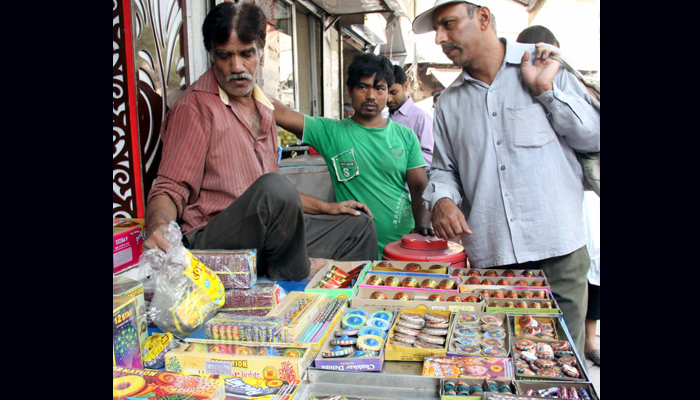TRENDING TAGS :
Delhi: Repetition of 2016 post-Diwali pollution scenario unlikely
New Delhi: The 2016 post-Diwali scenario is unlikely to repeat this year on Friday after Diwali even in the worse case scenario where firecracker emission in the national capital remains same as in 2016, forecaster SAFAR said on Monday.
However, according to the System of Air Quality and Weather Forecasting and Research (SAFAR), the air quality on October 20 and 21 will still swing between "severe" to "very poor", with Delhi University North Campus expected to receive maximum pollutants.
At "very poor" level, outdoor physical activities are discouraged, while in "severe" or "emergency situation", even stepping outside is discouraged.
The firecrackers, of which sale has been banned by the Apex court in Delhi and NCR, will still play spoilsport for respiration, as the low winds and moisture would lead to "stagnation of local pollution".
"SAFAR Air Quality Forecast for Diwali-2017" report, based on PM2.5 (or particles with diameter less than 2.5 mm, the major pollutant in Delhi-NCR) count, said the upper air winds, from Indo-Gangetic plains and stubble burning areas, were quite low and unlikely to impact Delhi.
Delhi faced its worst air pollution and smog of decades in 2016 post-Diwali scenario, with unabated and unchecked stubble burning in neighbouring states being coupled with additional emissions from Diwali firecrackers bought the PM2.5 volume to over 600 units.
Schools were closed after November 6, 2016 with the OPDs at AIIMS recording 35 per cent and Safdarjung Hospital recording 20-25 per cent spike in the number of patients with respiratory issues.
The international permissible limit for PM 2.5 is 25 micrograms per cubic metre, while for India it is 60.
Last year, the share of coarser and harmful PM2.5 during Diwali increased by 10-20 per cent, making air quality more toxic.
"There is no likelihood of repeat of 2016," said the SAFAR forecast.
The SAFAR forecast for next five days is based on three comparative scenarios, assuming that the additional emissions from the firecrackers are 100 per cent -- as that in 2016, it is 50 per cent and the third scenario being no additional emission from the crackers.
The forecast considers the wind speed and direction over the period of next five days -- Tuesday, October 17, to Saturday, October 18.
The winds transport pollutant, especially from stubble burning regions and Gangetic plains (Uttar Pradesh) to Delhi, thereby affecting Delhi's air quality.
According to SAFAR, since the upper air winds are quite low, any significant impact on Delhi is unlikely.
However, firecrackers could still play spoilsport and increase toxic levels of Delhi's air.
"Moisture in the Delhi air is increasing and morning temperature is declining. This may increase atmospheric holding capacity of the emissions coming from firecrackers," the report said.
The report further warns that while the wind speed is expected to remain low, the dispersion of emissions from firecrackers would also be slow, leading to stagnation of the local pollution.
"In the case of zero-per cent firecrackers, the air-quality may improve a bit, but will not deteriorate," SAFAR said.
Considering the most and least polluted areas of Delhi, SAFAR expects Delhi University (North Campus) to get highest pollutant, followed by Noida, Dheerpur, Mathura Road, Palam, Pusa, Lodhi Road and Aya Nagar.
IANS



